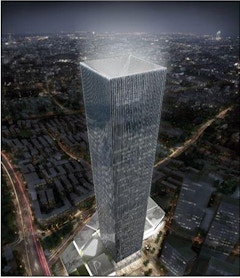Iconic Buildings
The iconic building principal incentive is to be visually attractive or stand out, for this purpose three main features must be accomplished: have a
The iconic building principal incentive is to be visually attractive or stand out, for this purpose three main features must be accomplished: have a

This paper will explore steel forming methods other than cold drawn or hot rolled processes, and how they allow steel to be utilized as the primary

Understanding how a building will reflect sunlight has gone from a rare requirement to a key consideration during the planning permission process in


Dynamic architectural lighting in urban areas is a key element in creating attractive nighttime icons in addition to potentially generating





In the last few years, the design community has embraced the challenge of reducing embodied carbon in buildings. Several tools are now available for

Life Cycle Assessment (LCA) is a methodology used to quantify the impact of building construction supply chains on the environment in terms of
Glazed wall systems, such as curtain walls and window walls, are one of the most commonly used façade systems in modern buildings in North America.




Computer simulations of an automated dynamic facade in a passively heated and cooled building by using predictive modeling of short-term future



